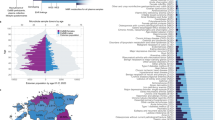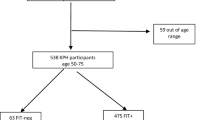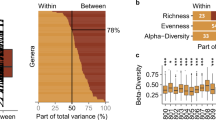Abstract
A lack of prospective studies has been a major barrier for assessing the role of the microbiome in human health and disease on a population-wide scale. To address this significant knowledge gap, we have launched a large-scale collection targeting fecal and oral microbiome specimens from 20,000 women within the Nurses’ Health Study II cohort (the Microbiome Among Nurses study, or Micro-N). Leveraging the rich epidemiologic data that have been repeatedly collected from this cohort since 1989; the established biorepository of archived blood, urine, buccal cell, and tumor tissue specimens; the available genetic and biomarker data; the cohort’s ongoing follow-up; and the BIOM-Mass microbiome research platform, Micro-N furnishes unparalleled resources for future prospective studies to interrogate the interplay between host, environmental factors, and the microbiome in human health. These prospectively collected materials will provide much-needed evidence to infer causality in microbiome-associated outcomes, paving the way toward development of microbiota-targeted modulators, preventives, diagnostics and therapeutics. Here, we describe a generalizable, scalable and cost-effective platform used for stool and oral microbiome specimen and metadata collection in the Micro-N study as an example of how prospective studies of the microbiome may be carried out.
This is a preview of subscription content, access via your institution
Access options
Access Nature and 54 other Nature Portfolio journals
Get Nature+, our best-value online-access subscription
$29.99 / 30 days
cancel any time
Subscribe to this journal
Receive 12 print issues and online access
$259.00 per year
only $21.58 per issue
Buy this article
- Purchase on Springer Link
- Instant access to full article PDF
Prices may be subject to local taxes which are calculated during checkout


Similar content being viewed by others
Change history
13 May 2021
A Correction to this paper has been published: https://doi.org/10.1038/s41596-021-00570-w
References
The Integrative HMP (iHMP) Research Network Consortium. The integrative human microbiome project. Nature 569, 641–648 (2019).
Sinha, R. et al. Next steps in studying the human microbiome and health in prospective studies, Bethesda, MD, May 16–17, 2017. Microbiome 6, 210 (2018).
Costea, P. I. et al. Towards standards for human fecal sample processing in metagenomic studies. Nat. Biotechnol. 35, 1069–1076 (2017).
Sinha, R. et al. Assessment of variation in microbial community amplicon sequencing by the Microbiome Quality Control (MBQC) project consortium. Nat. Biotechnol. 35, 1077–1086 (2017).
Bao, Y. et al. Origin, methods, and evolution of the three Nurses’ Health Studies. Am. J. Public Health 106, 1573–1581 (2016).
Ogino, S. et al. Integrative analysis of exogenous, endogenous, tumour and immune factors for precision medicine. Gut 67, 1168–1180 (2018).
Rice, M. S. et al. Breast cancer research in the Nurses’ Health Studies: exposures across the life course. Am. J. Public Health 106, 1592–1598 (2016).
Townsend, M. K., Aschard, H., De Vivo, I., Michels, K. B. & Kraft, P. Genomics, telomere length, epigenetics, and metabolomics in the Nurses’ Health Studies. Am. J. Public Health 106, 1663–1668 (2016).
Abu-Ali, G. S. et al. Metatranscriptome of human faecal microbial communities in a cohort of adult men. Nat. Microbiol 3, 356–366 (2018).
Mehta, R. S. et al. Stability of the human faecal microbiome in a cohort of adult men. Nat. Microbiol 3, 347–355 (2018).
Huang, T. et al. The Mind-Body Study: study design and reproducibility and interrelationships of psychosocial factors in the Nurses’ Health Study II. Cancer Causes Control 30, 779–790 (2019).
Bartosch, S., Fite, A., Macfarlane, G. T. & McMurdo, M. E. Characterization of bacterial communities in feces from healthy elderly volunteers and hospitalized elderly patients by using real-time PCR and effects of antibiotic treatment on the fecal microbiota. Appl. Environ. Microbiol. 70, 3575–3581 (2004).
Nagata, N. et al. Effects of bowel preparation on the human gut microbiome and metabolome. Sci. Rep. 9, 4042 (2019).
Jalanka, J. et al. Effects of bowel cleansing on the intestinal microbiota. Gut 64, 1562–1568 (2015).
Sinha, R. et al. Collecting fecal samples for microbiome analyses in epidemiology studies. Cancer Epidemiol. Biomark. Prev. 25, 407–416 (2016).
Carroll, I. M., Ringel-Kulka, T., Siddle, J. P., Klaenhammer, T. R. & Ringel, Y. Characterization of the fecal microbiota using high-throughput sequencing reveals a stable microbial community during storage. PLoS ONE 7, e46953 (2012).
Wu, G. D. et al. Sampling and pyrosequencing methods for characterizing bacterial communities in the human gut using 16S sequence tags. BMC Microbiol. 10, 206 (2010).
Lauber, C. L., Zhou, N., Gordon, J. I., Knight, R. & Fierer, N. Effect of storage conditions on the assessment of bacterial community structure in soil and human-associated samples. FEMS Microbiol. Lett. 307, 80–86 (2010).
Dominianni, C., Wu, J., Hayes, R. B. & Ahn, J. Comparison of methods for fecal microbiome biospecimen collection. BMC Microbiol. 14, 103 (2014).
Choo, J. M., Leong, L. E. & Rogers, G. B. Sample storage conditions significantly influence faecal microbiome profiles. Sci. Rep. 5, 16350 (2015).
Franzosa, E. A. et al. Relating the metatranscriptome and metagenome of the human gut. Proc. Natl Acad. Sci. USA 111, E2329–E2338 (2014).
Drew, D. A. et al. Fecal microbiome in epidemiologic studies—letter. Cancer Epidemiol. Biomark. Prev. 25, 869 (2016).
Lloyd-Price, J. et al. Multi-omics of the gut microbial ecosystem in inflammatory bowel diseases. Nature 569, 655–662 (2019).
Human Microbiome Project, C. A framework for human microbiome research. Nature 486, 215–221 (2012).
Dong, T. S. & Gupta, A. Influence of early life, diet, and the environment on the microbiome. Clin. Gastroenterol. Hepatol. 17, 231–242 (2019).
Stewart, C. J. et al. Temporal development of the gut microbiome in early childhood from the TEDDY study. Nature 562, 583–588 (2018).
Jensen, M. A., Ferretti, V., Grossman, R. L. & Staudt, L. M. The NCI Genomic Data Commons as an engine for precision medicine. Blood 130, 453–459 (2017).
Faith, J. J. et al. The long-term stability of the human gut microbiota. Science 341, 1237439 (2013).
Lloyd-Price, J. et al. Strains, functions and dynamics in the expanded Human Microbiome Project. Nature 550, 61–66 (2017).
Wu, G. D. et al. Linking long-term dietary patterns with gut microbial enterotypes. Science 334, 105–108 (2011).
Ianiro, G., Tilg, H. & Gasbarrini, A. Antibiotics as deep modulators of gut microbiota: between good and evil. Gut 65, 1906–1915 (2016).
David, L. A. et al. Diet rapidly and reproducibly alters the human gut microbiome. Nature 505, 559–563 (2014).
Tigchelaar, E. F. et al. Cohort profile: LifeLines DEEP, a prospective, general population cohort study in the northern Netherlands: study design and baseline characteristics. BMJ Open 5, e006772 (2015).
Falony, G. et al. Population-level analysis of gut microbiome variation. Science 352, 560–564 (2016).
Fu, B. C. et al. Characterization of the gut microbiome in epidemiologic studies: the multiethnic cohort experience. Ann. Epidemiol. 26, 373–379 (2016).
Rockett, H. R., Berkey, C. S., Field, A. E. & Colditz, G. A. Cross-sectional measurement of nutrient intake among adolescents in 1996. Prev. Med 33, 27–37 (2001).
Song, S. J. et al. Preservation methods differ in fecal microbiome stability, affecting suitability for field studies. mSystems https://doi.org/10.1128/mSystems.00021-16 (2016).
Anderson, E. L. et al. A robust ambient temperature collection and stabilization strategy: Enabling worldwide functional studies of the human microbiome. Sci. Rep. 6, 31731 (2016).
Luo, T. et al. Effects of specimen collection methodologies and storage conditions on the short-term stability of oral microbiome taxonomy. Appl. Environ. Microbiol. 82, 5519–5529 (2016).
Acknowledgements
This work was supported by the Massachusetts Life Sciences Center (MLSC), the National Institutes of Health (U01 CA176726, R24 DK110499, R00 CA215314, R35 CA253185, R01 CA202704 and R01 CA243454) and the Harvard T. H. Chan School of Public Health. J.I. is supported by Nebraska Tobacco Settlement Biomedical Research Development Funds. We thank staff at the Harvard T. H. Chan School of Public Health for their assistance (A. Spickard, M. Sinunu and S. Branstrator) and the investigators of other cohort studies for their participation of the microbiome working group and contribution to the questionnaire development. These investigators include J. Ahn (New York University), B. Blot (Vanderbilt University), R. Burk (Albert Einstein College of Medicine), M. Hullar (Fred Hutchinson Cancer Research Center), R. Kaplan (Albert Einstein College of Medicine), J. Lampe (Fred Hutchinson Cancer Research Center), L. Le Marchand (University of Hawaiʻi), K. Meyer (University of North Carolina at Chapel Hill), Q. Qi (Albert Einstein College of Medicine), T. Randolph (Fred Hutchinson Cancer Research Center), H. Sesso (Harvard Medical School/Brigham and Women’s Hospital), M. Shrubsole (Vanderbilt University), R. Sinha (National Cancer Institute), E. Vogtmann (National Cancer Institute), L. Wilkens (University of Hawaiʻi) and W. Zheng (Vanderbilt University). We also thank the participants and staff of the Nurses’ Health Study II for their valuable contributions—in particular, B. Hall, A. Scott, S. Al-Shanniek and E. Cornacchio for their dedication to sampling processing and handling and M. Atkinson for his database programming.
Author information
Authors and Affiliations
Contributions
Study concept and design: A.H.E., W.C.W., A.T.C., W.S.G., C.H., E.B.R., M.S. Acquisition of data: C.E., C.L., J.E.W., L.H.N., L.J.M., K.I., J.I., N.P., A.H.E., W.C.W., A.A., Q.S., S.S.T., A.T.C., W.S.G., C.H., E.B.R., M.S. Drafting of the manuscript: A.T.C., W.S.G., C.H., E.B.R., M.S. Critical revision of the manuscript for important intellectual content: C.E., C.L., J.E.W., L.H.N., L.J.M., K.I., J.I., N.P., A.H.E., W.C.W., A.A., Q.S., S.S.T., A.T.C., W.S.G., C.H., E.B.R., M.S. Funding acquisition: A.H.E., W.C.W., A.T.C., W.S.G., C.H., E.B.R. Administrative, technical, or material support: A.T.C., W.S.G., C.H., E.B.R., M.S. Study supervision: A.T.C., W.S.G., C.H., E.B.R., M.S.
Corresponding author
Ethics declarations
Competing interests
The authors declare no competing interests.
Additional information
Peer review information Nature Protocols thanks Muriel Derrien and John Penders for their contribution to the peer review of this work.
Publisher’s note Springer Nature remains neutral with regard to jurisdictional claims in published maps and institutional affiliations.
Supplementary information
Supplementary Information
Supplementary Methods 1, Table 1, Methods 2 and 3 and Discussion.
Rights and permissions
About this article
Cite this article
Everett, C., Li, C., Wilkinson, J.E. et al. Overview of the Microbiome Among Nurses study (Micro-N) as an example of prospective characterization of the microbiome within cohort studies. Nat Protoc 16, 2724–2731 (2021). https://doi.org/10.1038/s41596-021-00519-z
Received:
Accepted:
Published:
Issue Date:
DOI: https://doi.org/10.1038/s41596-021-00519-z
This article is cited by
-
Gut microbiome composition and metabolic activity in women with diverticulitis
Nature Communications (2024)
Comments
By submitting a comment you agree to abide by our Terms and Community Guidelines. If you find something abusive or that does not comply with our terms or guidelines please flag it as inappropriate.



